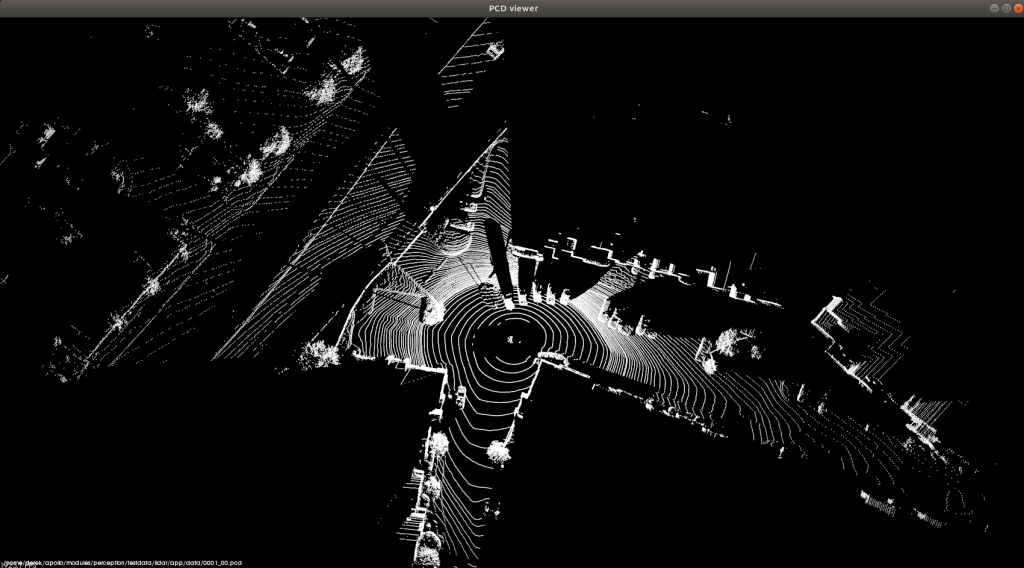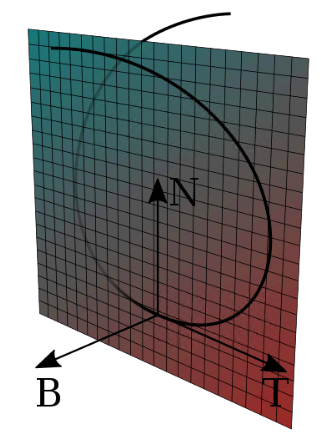原创文章,转载请注明: 转载自慢慢的回味
本文链接地址: Apollo自动驾驶的点云CNN分割
点云分割的主要方法为:1、映射3D点云到2D的索引图上,对每个索引图上的像素点里面的点云进行高度,强度,数量的统计;2、对2D索引图进行CNN推断,从而得到每个像素点倾向的中心点,方向,所属类型的概率等;3、通过SPP引擎集群2D索引图上的像素点;4、对每个集群里的每个像素点求所属类型概率的平均值,从而得到集群所属的类型,点云的范围,中心点,高度等。从而完成了物体的识别。
这儿以单元测试cnn_segmentation_test.cc的测试cnn_segmentation_sequence_test为例来分析Apollo自动驾驶的点云CNN分割。
CNN分割测试用例
TEST(CNNSegmentationTest, cnn_segmentation_sequence_test) { unsetenv("CYBER_PATH"); unsetenv("MODULE_PATH"); //设置工作目录和配置文件路经 FLAGS_work_root = "/apollo/modules/perception/testdata/" "lidar/lib/segmentation/cnnseg/"; FLAGS_config_manager_path = "../../../../../production/conf"; //实例化一个CNN分割类实例 auto segmentation = std::shared_ptr<cnnsegmentation>(new CNNSegmentation); LidarDetectorOptions options; EXPECT_FALSE(segmentation->Detect(options, nullptr)); LidarFrame frame_data; EXPECT_FALSE(segmentation->Detect(options, &frame_data)); frame_data.cloud = base::PointFCloudPool::Instance().Get(); frame_data.world_cloud = base::PointDCloudPool::Instance().Get(); EXPECT_FALSE(segmentation->Detect(options, &frame_data)); //初始化CNN分割实例,包括参数加载,特征提取初始化,CNN推测初始化。见下面详细注解。 EXPECT_TRUE(segmentation->Init()); EXPECT_TRUE(segmentation->InitClusterAndBackgroundSegmentation()); std::string pcd_path = "/apollo/modules/perception/testdata/lidar/app/data/"; std::vector<std::string> pcd_file_names; common::GetFileList(pcd_path, ".pcd", &pcd_file_names); std::string file_name; std::sort(pcd_file_names.begin(), pcd_file_names.end(), [](const std::string& lhs, const std::string& rhs) { if (lhs.length() < rhs.length()) { return true; } else if (lhs.length() == rhs.length()) { return lhs <= rhs; } else { return false; } }); for (size_t i = 0; i < pcd_file_names.size(); ++i) { std::shared_ptr<lidarframe> frame(new LidarFrame); frame->cloud = base::PointFCloudPool::Instance().Get(); frame->world_cloud = base::PointDCloudPool::Instance().Get(); //加载点云文件,比如这儿为/apollo/modules/perception/testdata/lidar/app/data/0001_00.pcd,可视化的结果如下图 if (!LoadPCDFile(pcd_file_names[i], frame->cloud)) { continue; } frame->world_cloud->resize(frame->cloud->size()); //侦测当前帧中的对象,见下面代码详解 EXPECT_TRUE(segmentation->Detect(options, frame.get())); //打印侦测到的对象信息,见下面代码详解 PrintObjects((frame.get())->segmented_objects); } } </lidarframe></std::string></cnnsegmentation> |
 测试用例PCD文件可视化结果
测试用例PCD文件可视化结果
继续阅读“Apollo自动驾驶的点云CNN分割”本作品采用知识共享署名 4.0 国际许可协议进行许可。


![Rendered by QuickLaTeX.com \[ \begin{Bmatrix} \frac{d\vec{T}}{ds}= & \kappa\vec{N} \\ \frac{d\vec{N}}{ds}= & -\kappa\vec{T}+\tau\vec{B} \\ \frac{d\vec{B}}{ds}= & -\tau\vec{N} \end{Bmatrix} \]](https://liuxiaofei.com.cn/blog/wp-content/ql-cache/quicklatex.com-d8c6e96d3b90832c0ffe3e7efc0091e6_l3.png)
![Rendered by QuickLaTeX.com \[ \begin{Bmatrix} \frac{d\vec{T}}{ds}= & \kappa\vec{N} \\ \frac{d\vec{N}}{ds}= & -\kappa\vec{T} \end{Bmatrix} \right \]](https://liuxiaofei.com.cn/blog/wp-content/ql-cache/quicklatex.com-f2f0d87facdb2f33ec934e85316e6cca_l3.png)